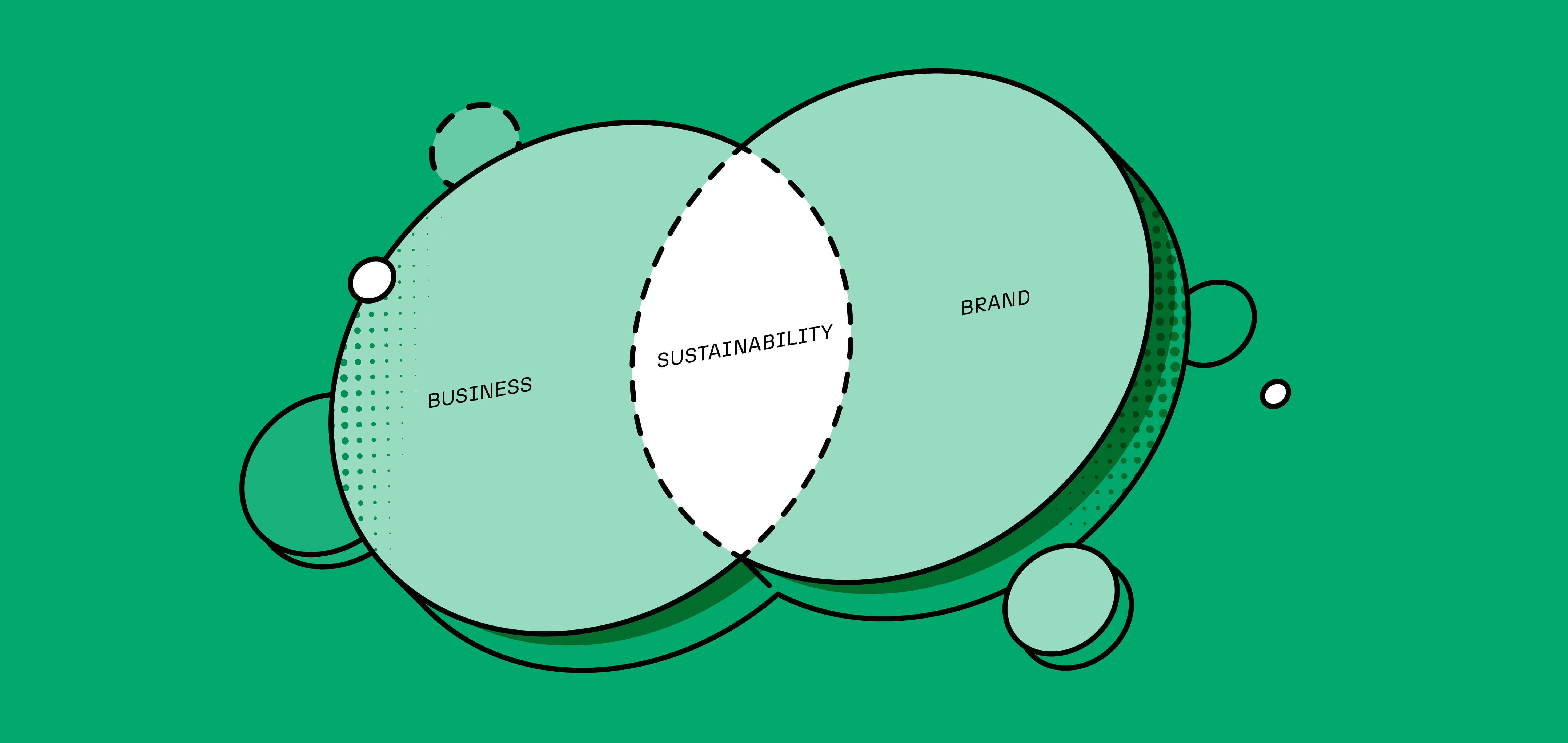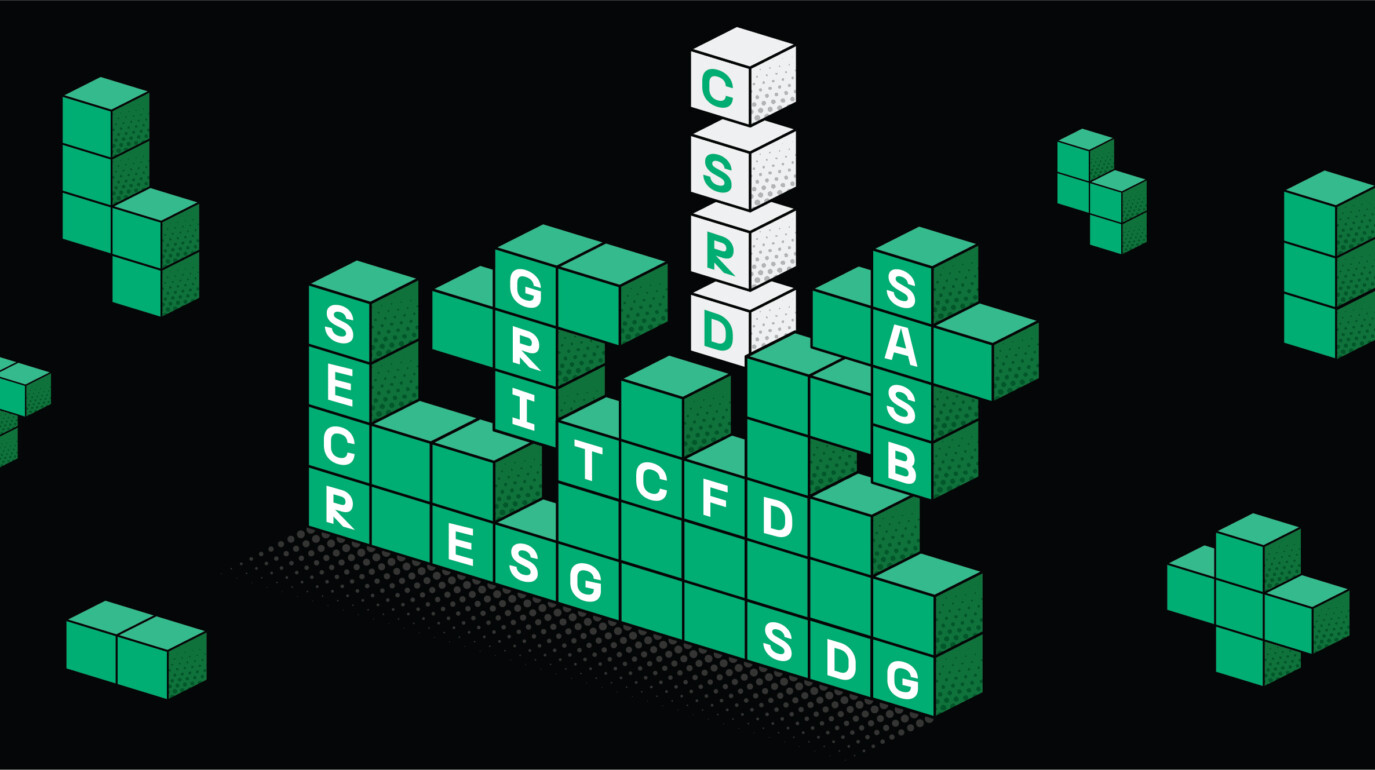
AUTHOR: KIRSTIE DAVID
READ TIME: 5 MINS
Strategy Director Kirstie David on the growing threat of greenwashing – and why sustainability should always exist at the intersection of business and brand.
A belated welcome to Conran! Tell us a bit about your background and what brought you to Conran late last year.
I’ve had quite an unusual career – developing strategic communications for organisations like Shell and AstraZeneca, working with regulators like the Advertising Standards Authority (ASA) to help clients tell authentic stories, and holding board positions for various charities. I’ve researched issues like online child exploitation for documentary filmmakers and developed business and brand strategies for modern slavery organisations and conservation charities like the Jane Goodall Institute.
My role at Conran brings together my experience of corporate sustainability with subject matter knowledge of themes like the energy transition and modern slavery. My focus is on brand and marcomms, from purpose through to campaigns.
Why is the sustainability communications space of particular interest to you?
I firmly believe that communication is the most powerful tool we have as a species, and it’s more important than ever that we use that in a way that moves us all forward. As humans, we rely upon the interconnectedness of people, planet, and society, and right now we’re in a window of time where the actions we take today will determine our collective future.
Brands should communicate their authentic sustainability perspectives and actions to gain competitive advantage; beyond any other benefit, the commitment of a company to its role in our future is one that will have a lasting impact.
But it’s a rapidly changing landscape, with increased demand from investors, talent, customers, consumers, and governments – all looking for greater transparency, more assertive positions on sustainability issues, and more action. This is because the brands we invest our time and money in affect our individual place in a sustainable future. It’s the era of stakeholder capitalism – and for ambitious brands out there, this should feel exciting!
What can a well-considered and implemented strategy – with sustainability at its heart – deliver for brands?
It starts with purpose. This has become (unfairly) a bit of a buzzword over the years, but your purpose should be the supreme organising principle, around which all strategic decisions are made – and a foundation of your company culture. A purpose that has been considered with sustainability in mind shows stakeholders that you intend to be around for a long time, giving them confidence in how you run your business, your leadership, and why they should invest their time or money in you.
“It's the era of stakeholder capitalism – and for ambitious brands out there, this should feel exciting!”
I anticipate the role of purpose growing over time. We’re already seeing regulations and legislation increasingly emphasising its importance. In the US, Public Benefit Corporations are for-profit corporations that ‘pursue a purpose for public benefit… and operate in a responsible and sustainable manner’. In the UK, the British Academy’s Future of the Corporation programme has proposed reforms that include legal requirements for directors to implement a corporate purpose that doesn’t profit from negative externalities.
Where do brands tend to trip up when thinking about sustainability?
Sustainability should exist at the intersection of business and brand, not separately. This means it should touch all sides of your business rather than existing as a single department or silo – if sustainability isn’t at the core of your purpose and present throughout your brand cycle and culture, you’re more likely to greenwash.
That’s why, when we conduct brand and communications audits at Conran, the first thing we look at is the business strategy because this ultimately affects how the brand is expressed.
Brands also tend to trip up by thinking that corporate sustainability is a moral imperative, when actually it’s about the longevity of your brand and ultimately your business. For branding and marketing teams, focusing exclusively on morality often leads to greenwashing.
And what’s your take on greenwashing?
There’s increasing regulation around greenwashing due to growing recognition of the fact that sustainability credentials can have a material effect on share price and consumer behaviour. We work with clients through the brand and communications lifecycle to help them navigate the complexities of greenwashing. I’ve worked with the ASA for over a decade, and it’s not enough to simply know the CAP codes they enforce; how they are being enforced is as, if not more, important.
Which recent examples of greenwashing can brands learn from?
In 2021, Oatly made the claim that ‘Oatly generates 73% less CO2e vs. milk’. They’d commissioned an independent body to calculate the emissions of Oatly Barista Edition oat drink and British whole cows’ milk to make this claim but it was considered misleading because it led consumers to believe the comparison was between Oatly and all dairy drinks, rather than the emissions of one product: the Barista Edition Oat drink.
“Sustainability for corporates isn’t just a moral imperative; it’s about the longevity of your business and brand.”
Oatly did (and does) a lot of things right with their sustainability approach in marketing and advertising, but the real issue here was how they told their story. Cherry-picking data is an easy trap to fall into when you have a big message and limited space.
When it comes to communications, what’s the most important lessons you’ve learnt over the years?
Award-winning documentary filmmaker Kate Blewett taught me the importance of not being sensational, having a critical view and always backing up everything you say. Dr Jane Goodall taught me a lot about focus – in fact, I’ve never worked with anyone more focused and purposeful than Jane, who’ll be 89 this year and is still inspiring people around the world.
Artist Charlie Mackesy taught me that meaning comes from how people see themselves in your stories, visually or verbally. And Professor Colin Mayer, who I’ve never met or worked with, perfectly sums up corporate sustainability through his definition of purpose: ‘to solve the problems of people and planet profitably, and not profit from causing problems’.
Finally, what’s the best thing about life at Conran so far?
I love that we offer a balance of strategy and design, which is pretty unique in an industry where agencies tend to specialise in one or the other. Conran has a rich design heritage, which began with Sir Terence Conran, but we can now proudly say that strategy plays just as important a part in our offering.
From a sustainability perspective, the fact that we have a highly experienced investor communications team means we can offer much more depth to our recommendations for clients because we understand the regulations and frameworks around which businesses operate.
And finally, I’m excited to be playing a part in Havas Genus, the Havas sustainability network that brings together the sustainability expertise from a number of Havas agencies in London and Dublin to offer clients a truly holistic and seamless approach to sustainability.



